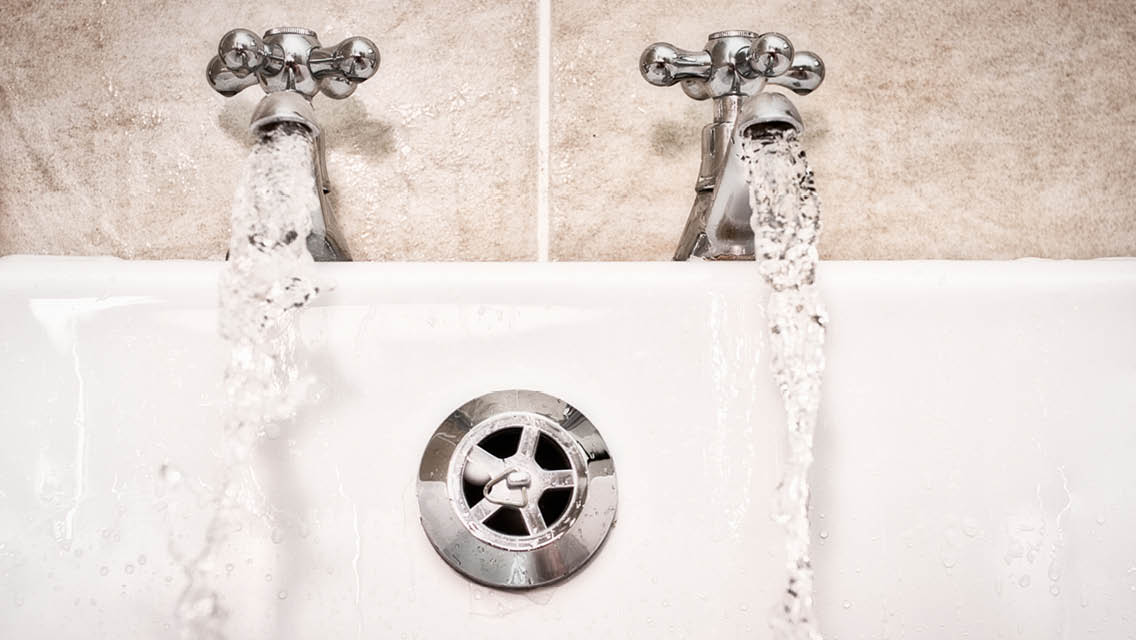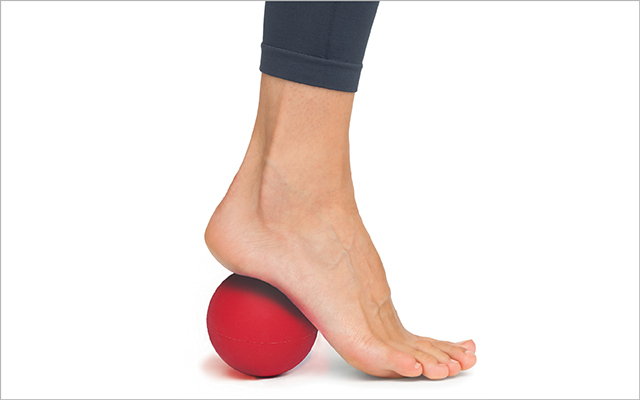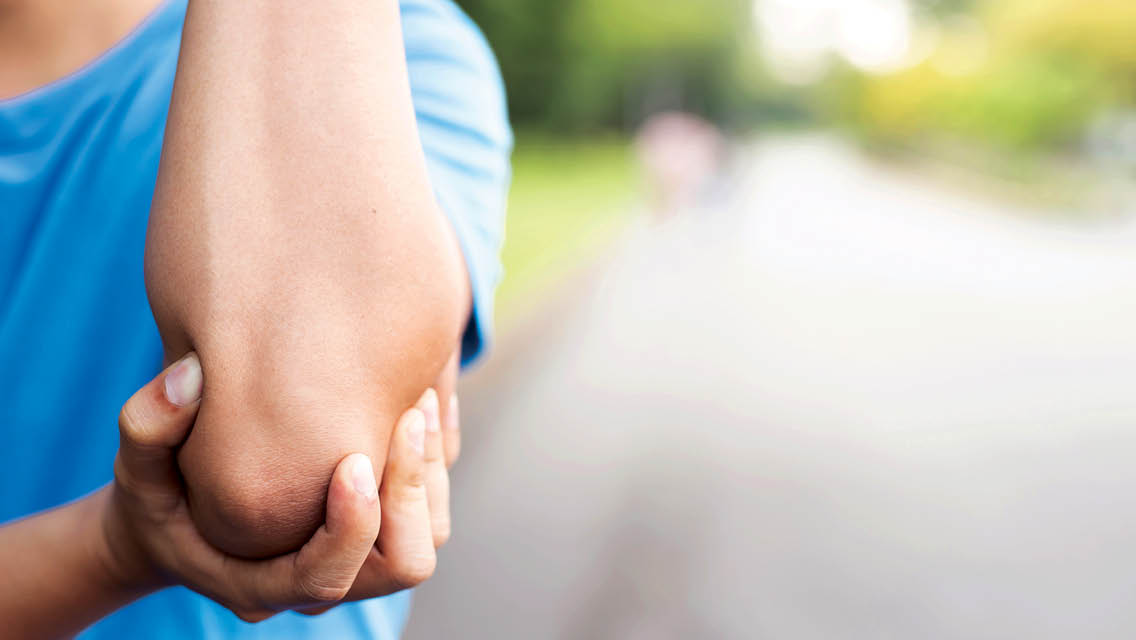Physical fitness has its perils, not the least of which is the potential for injury. Whether it’s a sprained muscle or chafed skin, an athletic malady can impede your performance, diminish your pleasure and exact a toll on your body. Dealing with recurring or chronic injuries can be particularly frustrating, especially if they sideline you – even for a day or two.
Fortunately, there is a whole array of clever solutions designed to help you recover faster, and perhaps even avoid future trouble. We tapped leading trainers and medical experts to find out how they prevent and manage common sports injuries.
Ailment: Carpal Tunnel Syndrome
Remedy: Stretch and strengthen your hands
Carpal tunnel syndrome can be inherited, acquired in the workplace or developed as the result of athletic activity. In some cases, a sports-related trauma (such as a sprain or fracture) or osteoarthritis can also predispose an individual to carpal tunnel syndrome.
But however you get it, the discomfort, weakness and decreased range of motion it causes can hamper your athletic pursuits, impeding your tennis or golf swing, interfering with certain weightlifting and yoga postures, or forcing your throwing arm out of whack.
What causes carpal tunnel syndrome?
Carpal tunnel syndrome results from the compression of the median nerve, which runs from the forearm into the hand. In many cases, the compression is the result of tendon irritation and inflammation caused by repetitive stress. Symptoms of carpal tunnel syndrome include numbness and tingling in the hand, decreased hand strength, and difficulty doing simple mechanical tasks, such as opening jars, turning knobs or participating in any number of athletic activities.
To remedy repetitive stress or carpal tunnel, Sharon Henkel, DC, a chiropractor who works with athletes at U.S. HealthWorks in Santa Ana, Calif., recommends strengthening the muscles in the back of the hand.
One neat product to help you do that, she says, is the Cats Paw, a paw-shaped, flat, stretchy pad about the size of your palm with holes for your fingers. “Our hands are always in a flexed position, which can strain the muscles,” Henkel says. “With the Cats Paw, though, your fingers are forced to extend, strengthening the muscles in the back of the hand.”
The Cats Paw not only helps treat repetitive stress injuries, it also helps prevent them. If your work or leisure activities predispose you toward repetitive stress problems, or carpal tunnel syndrome runs in your family, proactively strengthening your hand and arm muscles is probably a good idea. Henkel says that just a few repetitions of extending your fingers against the Cats Paw one or two times daily should do the trick.
(See “In the Grip of Pain” for more ideas to relieve carpal tunnel syndrome).
Ailment: Soft-tissue injury
Remedy: High-tech ice packs
When you have a soft-tissue injury like a strain, sprain, low-back pain or tendonitis, ice can be your best friend. But don’t rely on stiff blocks of ice that refuse to conform to your body, or on frozen-vegetable packs that turn into a mushy mess. Instead, try ice packs designed specifically to treat sports-related injuries.
One good low-cost product to try: the SnowPack, a reusable ice pack that stays cold for two hours or more. It comes with an optional strap-on cover that lets you keep the ice in place and apply compression without monopolizing your hands – so you can cheer for your team or read the sports page while you chill.
Another state-of-the art option at the other end of the pricing spectrum: Game Ready ($2,120 for unit and connector hose; individual wraps are $230 to $380). This portable, tool-box-sized unit comes with specially designed wrap attachments for placing on different types of injured areas. Although the four-digit price tag can be a shocker, you don’t have to drop your gym membership to afford this. Instead, you can rent it from a local distributor for $20 to $30 a day.
Game Ready combines the principles of RICE (rest, ice, compression and elevation) into an easy-to-use unit. Simply place the wrap around your injured area and select the compression level, temperature and length of treatment time. The wrap then applies deep-tissue cold therapy to your injury.
Gary Guerriero, physical therapist, athletic trainer and owner of the U.S. Athletic Training Center in New York City, got hooked on the unit after recovering from shoulder surgery. He now uses it with patients who have knee, shoulder and back problems, and the results have been overwhelmingly positive. “Game Ready helps you recover faster from injuries,” he says, adding that it also reduces pain and swelling. “You feel the effects immediately.”
Ailment: General aches and pains, especially in the knees, lower back and neck/arm area
Remedy: Heat things up
You’ve just logged a tough workout and your muscles are screaming. Or maybe you’ve sprained a muscle. The fix?
Most experts recommend icing the injury during the first 48 to 72 hours. But if you’re still aching after that, switch to heat. “Warming an injured area, we think, increases the flow of blood and may carry away toxins and promote healing,” says Bill McCarberg, MD, founder of the Chronic Pain Management Program at Kaiser Permanente in San Diego.
Of course, you can always use a heating pad, but the downside is that you have to remain relatively sedentary. And in many cases, movement actually helps reduce pain and speeds healing of ailments and injuries. “The quicker you get back to any kind of function,” McCarberg says, “the more you’ll build up strength around the ligaments, which will help underlying problems heal faster.”
For many of his patients, McCarberg suggests ThermaCare heat wraps ($7, two to three wraps per box, www.thermacare.com). Available in versions designed for your knees, lower back and neck-to-arm areas, these air-activated wraps heat to 104 degrees F. and stay hot for eight hours. In one study authored by McCarberg (and sponsored by ThermaCare), people suffering osteoarthritis of the knee reported significant pain relief and increased knee flexibility and range of motion after wearing a ThermaCare wrap.
Ailment: Plantar fasciitis and foot pain
Remedy: Sole support
Runners, walkers and people who play court sports like basketball and volleyball frequently complain about heel pain, including plantar fasciitis, an inflammation of the tissue band that connects the heel bone to the base of the toes. Overtraining and poorly cushioned shoes can trigger plantar fasciitis, which is often experienced as pain when you take that first step in the morning following a night of inactivity.
Ralph Reiff, MEd, ATC, director of the St. Vincent Sports Performance Center in Indianapolis, uses numerous remedies to alleviate plantar fasciitis, including icing the heel, massaging the foot and stretching the calf and Achilles’ tendon. But his surefire secret weapon is the Hapad Comf-Orthotic Sports Replacement Insole ($17 per pair, www.hapad.com), which he uses in conjunction with other remedies.
In a year’s time, Reiff typically treats 400 injured runners, 70 percent of whom are wearing a badly fitting shoe or insole. While custom insoles and other interventions are necessary for some individuals, Reiff generally starts by replacing his patients’ standard insoles with Hapad insoles, and often, he says, heel pain practically vanishes. “By wearing this insole, you take the pressure off the central portion of the heel. The secret is in the longitudinal arch support,” Reiff says. He notes, however, that you should seek medical attention if heel pain is severe enough to force you to change your daily functioning.
(Improving strength and mobility in your feet can help alleviate pain, boost athletic performance, and enhance your quality of life. See “Strength Training for Your Feet” for more.)
Ailment: Blisters and chafing
Remedy: Protect yourself with a body balm
Blisters, chafing, saddle sores – they may sound like wimpy problems, but if you’ve ever been afflicted by them you know that these seemingly small problems can turn any physical activity into a torturous event. And if reopened or infected, they can take a surprisingly long time to heal.
“These problems are usually caused by some kind of friction, whether it’s skin rubbing against skin, or skin rubbing against shoes or clothing,” says Heather Hedrick, MS, RD, assistant director of educational services at the National Institute for Fitness and Sport and author of Absolute Beginner’s Guide to Half-Marathon Training.
Friction-prone spots include inner thighs and groin areas, heels, between toes, under arms, along the edges of women’s sports bras, and, for men, around the nipples.
The solution?
Hedrick recommends rubbing the abraded (or likely-to-become-abraded) area with Bodyglide Anti-Friction Skin Formula ($6 to $13, www.bodyglide.com). The nongreasy lubricant decreases friction so that the skin slides across clothes or skin, which prevents chafing. Bodyglide also comes in a Sun Formula with SPF 25, giving you simultaneous protection from harmful UV rays and friction.
While it’s often the case that a certain amount of occasional discomfort goes with the territory of athleticism, a “grin and bear it” attitude need not be your only line of defense. Self-treatment scenarios are getting better and more accessible all the time – and smart athletes take advantage of those advances to prevent and alleviate pain.
For chronic, serious or recurrent conditions, of course, it’s still wise to seek the counsel of a sports-medicine specialist. But increasingly, the remedies for common sports injuries lie within your own, very capable reach.
This article originally appeared as “Outsmarting the Ouch” in the October 2004 issue of Experience Life.



This Post Has 0 Comments